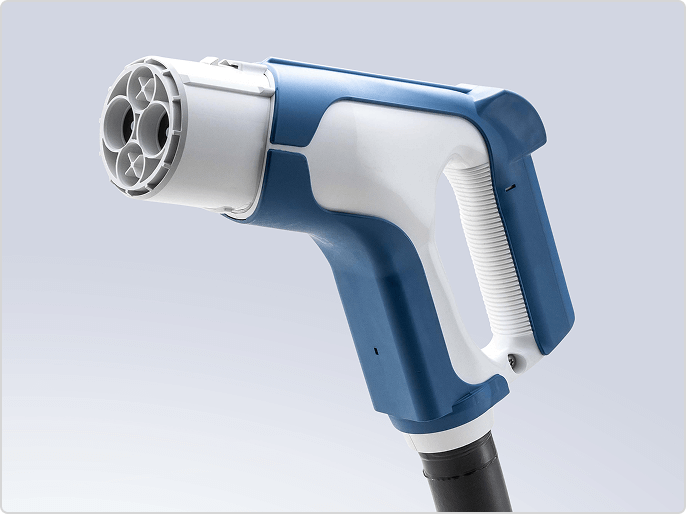Technology Areas/Product Groups
Optical Connector
光コネクタは、光ファイバどうしを精密に軸合わせし、端面を近接または接触させて低損失・高信頼の繰り返し接続を実現する製品です。単心コネクタおよび多心一括コネクタ(図1)に適用され、それぞれに複数の接続方式があります。フジクラは各接続方式におけるコア技術を有しており、お客様の用途に応じた多様なソリューションを提供しています。PC接続は、光ファイバ端面どうしを物理的に接触させる方式です。フジクラは、高精度研磨技術や精密樹脂成形技術などを活用し、光コネクタの低損失化と多心化を進めてきました。また、PC接続に加えて、屈折率整合材や光ファイバ融着接続機を組み合わせた現場組立型光コネクタソリューション(図2)も提供しています。近年、ハイパースケールデータセンター(HSDC)におけるデータトラフィック量の増大にともない、光コネクタや光配線ソリューションの高密度化が注目されています。この課題の解決策として、フジクラは、小型かつ高密度なキーコンポーネントであるMMCフェルール・コネクタ(図3)および配線ソリューションを、この新分野に展開しています。加えて、80 μmクラッド光ファイバ対応製品の開発を進めており、さらなる小型・高密度化を実現します。また、よりいっそうの高密度化を実現するため、1本のファイバに複数のコアを有するマルチコアファイバをアセンブルした多心光コネクタ、MCF-MPOコネクタ(図4)の開発にも取り組んでいます。
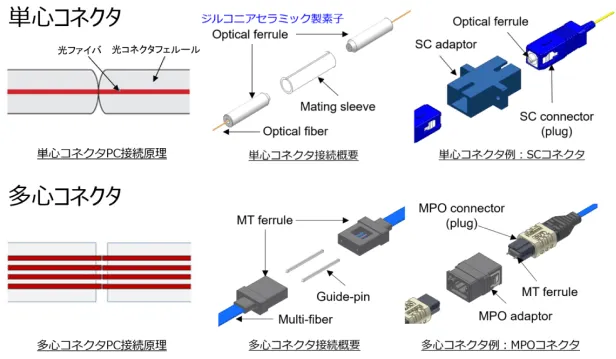
図1:単心コネクタおよび多心一括コネクタ

Figure 2: Examples of field-assembled connectors (Left: fusion-type MPO connector, Right: refractive index-matched single-fiber connector)
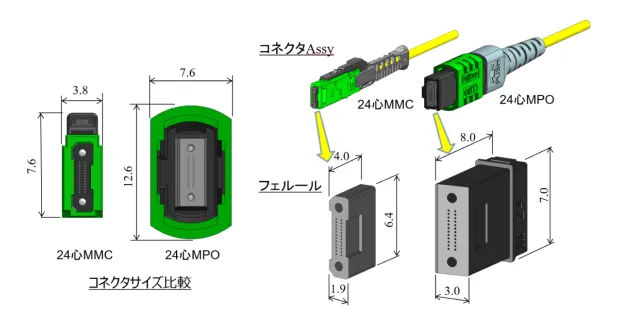
Figure 3: MMC vs MPO connector comparison

Figure 4: Multicore fiber (left) and MCF-MPO connector (right)
Fusion Splicer
フジクラでは、光ファイバの被覆除去、切断、融着接続を行う光ファイバ融着接続機の研究開発に取り組んでいます。この装置は、光ファイバのコア位置を高精度に測定し、精密軸合わせ機構により2本の光ファイバをサブミクロンレベルで調心します。その後、準コロナ放電またはCO2レーザを用いて融着接続を行います。タングステンの電極を用いた準コロナ放電方式の光ファイバ融着接続機は、小型化が可能で主に通信用光ファイバの接続に使用されます。一方、CO2レーザを用いた光ファイバ融着接続機は、光ファイバにタングステンが付着しないため、主に特殊光ファイバの加工に使用されます。このCO2レーザは、接続だけでなく先端レンズ加工や光結合器の製作でもその特性が活用されています。メカトロニクス技術を駆使したこの装置は、世界トップシェアの地位を築いています。
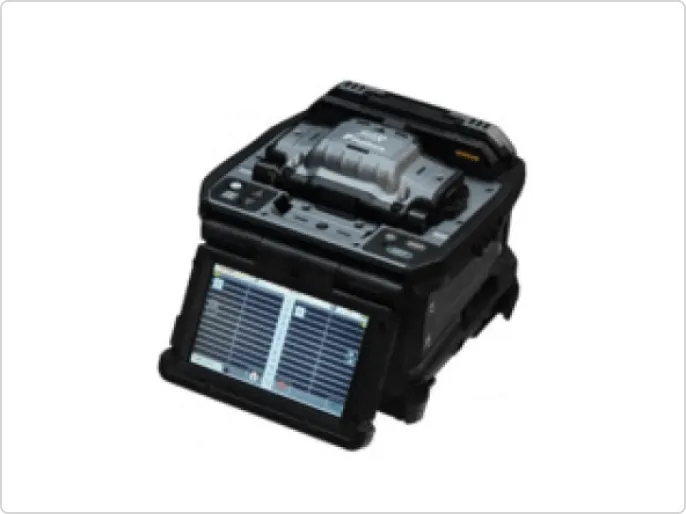
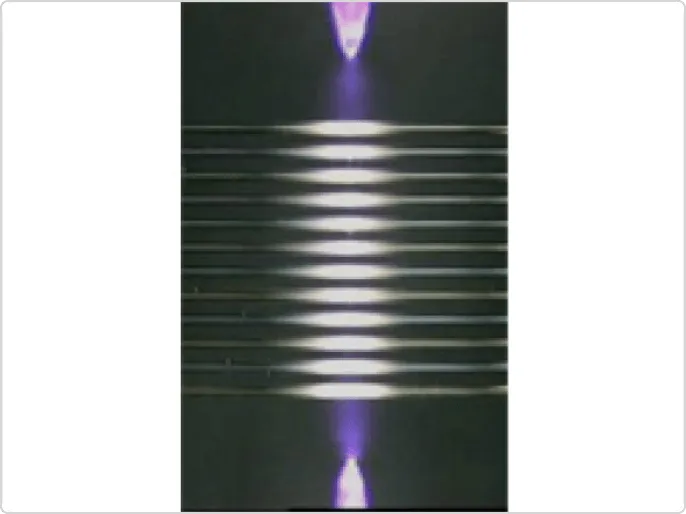
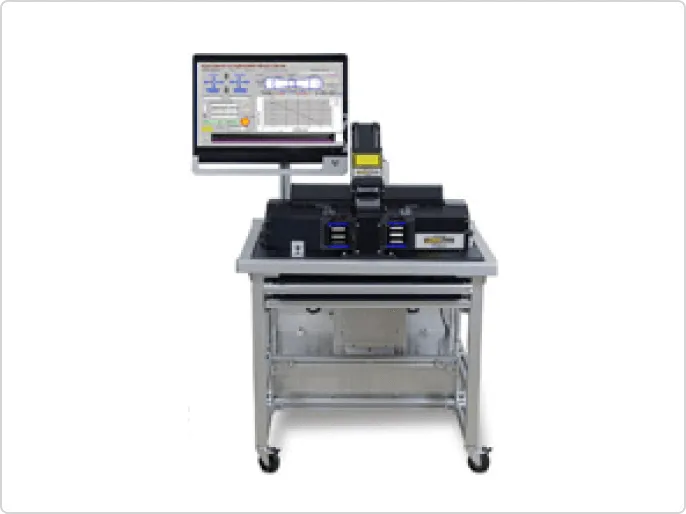
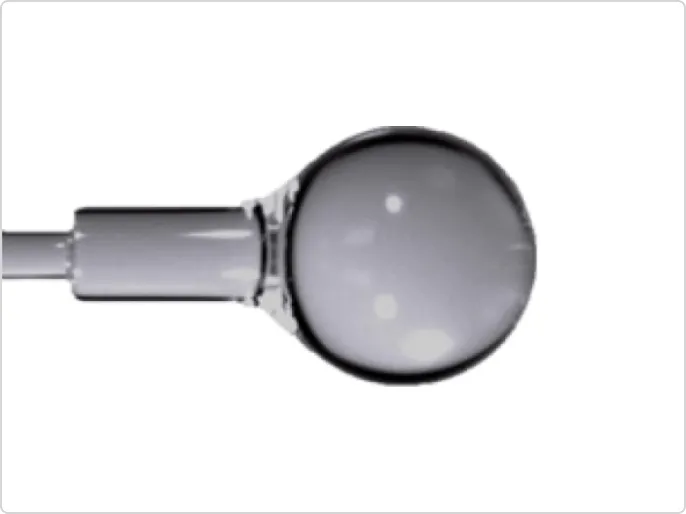
高密度光ファイバケーブル
- ①既存の布設工法のままで、既設管路への布設心数の増加
- ②SWR®を用いたリボンの一括融着接続による接続時間の短縮
- ③屋外から構内にいたる、一気通貫での布設による接続点の減少
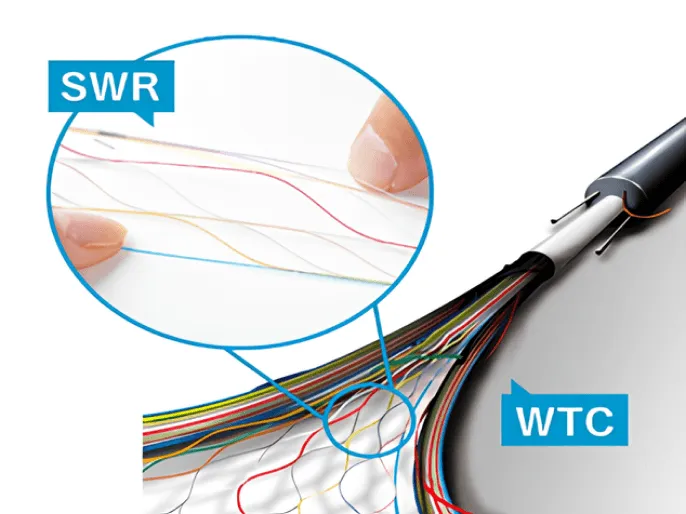

超細径高密度型WTC®

空気圧送型WTC®(AB-WTC™)
Electric Connectors
フジクラは、60年以上もの間、独創的なコネクタの開発、製造、品質管理、販売を行ってまいりました。
近年のスマートフォンをはじめとする携帯端末では、小型軽量化への需要がますます高まっており、コネクタに対しても「超低背」「超小型」「高い嵌合操作性」が求められています。
フジクラは、こうした市場のニーズにこたえるため、小型軽量化と多機能化を両立したコネクタの開発に取り組んでいます。
今後のさらに高まるであろう要求にこたえるため、以下の技術を磨き、世界トップレベルの超小型コネクタの開発を進めていきます。
Design Technology
- 接触信頼性を確保するために長年培ってきた構造解析技術
- 薄肉でも樹脂を充填させることができる流動解析技術(FTTH)
Production Engineering
- プレス金型製作技術、プレス加工技術
- 樹脂成形金型製作技術、薄肉樹脂成形技術
- 高速自動検査、組立、梱包技術
- Gold-saving plating technology for ultra-small terminals
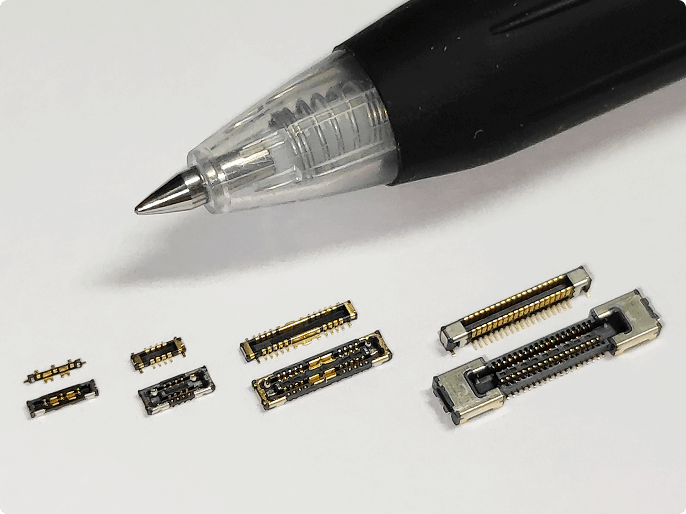
基板間コネクタ(FB3Aシリーズ)
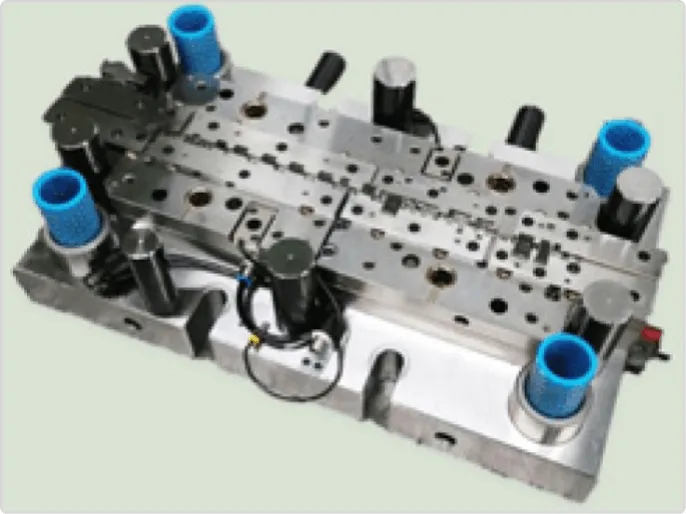
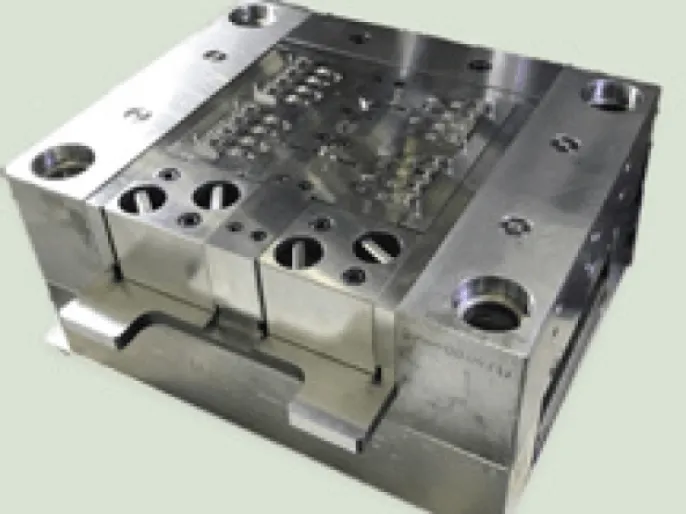
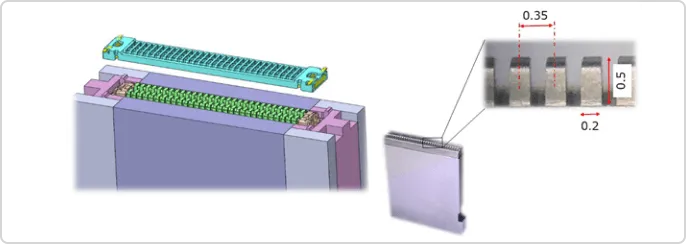
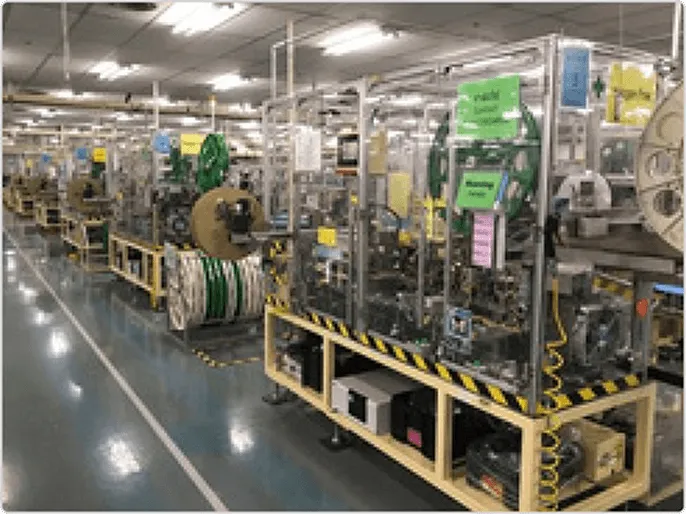
Wire Harness
「クルマの神経と血管」と例えられるワイヤハーネスは、車内の電子ユニットを正常に作動させるための電気経路となる配線の束で、電源や信号を車の隅々までつないでいます。
年々増加し続ける車載装備のエレクトロニクス化により、ワイヤハーネスも複雑化しています。
フジクラは、最新の技術と長年培った知恵と経験をいかし、配線材や車内配線システム、ヒューズボックス、コネクタ、端子にいたるまで、ワイヤハーネスの開発・製造をトータルに手がけています。
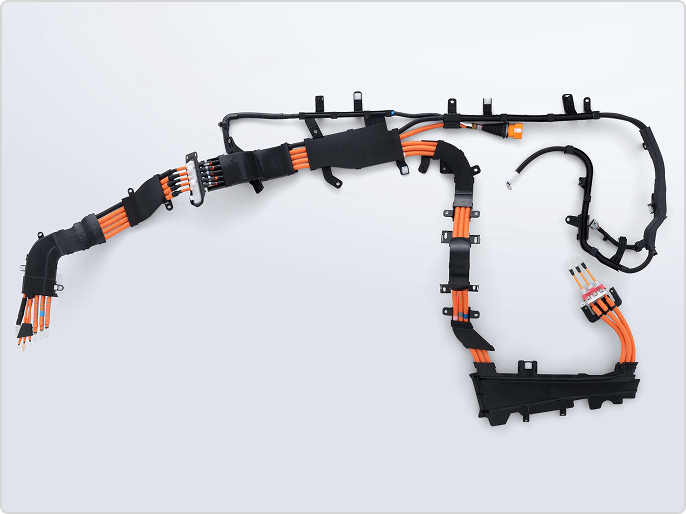
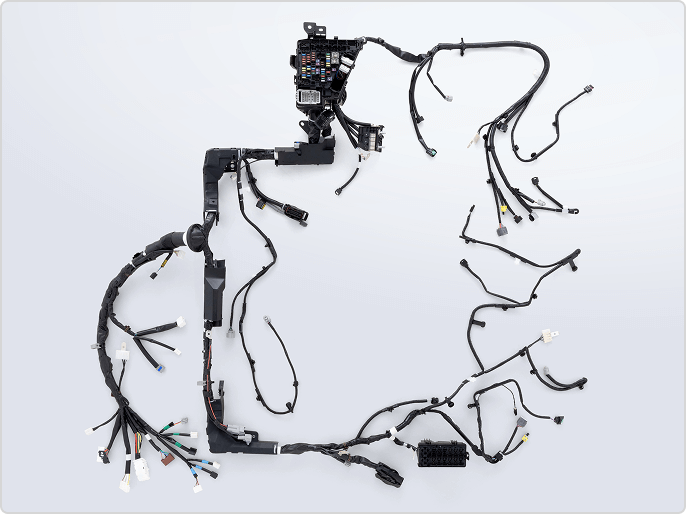
High Current Connection
電気自動車(EV)の普及には、充電時間の短縮が課題の一つとなっています。充電時間を短縮するには充電電流を増やす必要がありますが、充電ケーブルコネクタ内の発熱量が大きくなるという問題があります。ケーブルの導体サイズを大きくすれば発熱量を抑えられますが、その分、ケーブルが重く大きくなり、充電時の操作性が悪くなります。そこで、ケーブルの導体サイズを大きくせずに充電電流を増やすため、ケーブルコネクタ内に液体冷媒を循環させて効率的に排熱する液冷技術を採用した、液冷ケーブルコネクタを開発しました。この技術により、操作性を損なわない重量とサイズで従来の3倍強の定格充電電流を実現しました。
